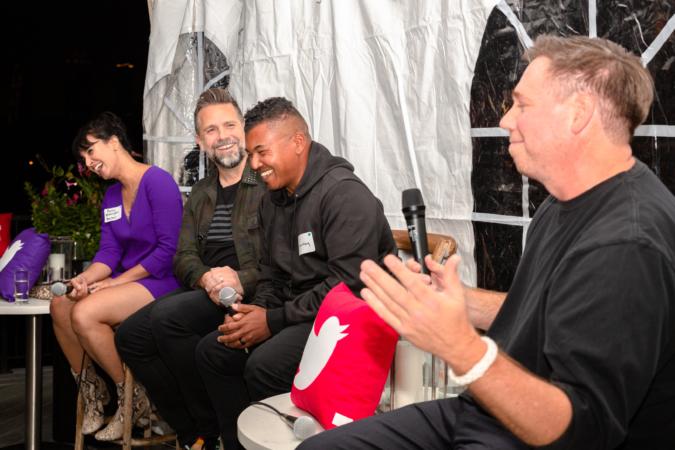Dantley Davis –– Vice President of Design and Research at Twitter –– was one of our speakers at AfroTech 2019. We sat down to talk to him about his life and what drives his work.
Davis was born in Seoul, Korea, to an American Air Force member and a Korean woman. His father’s career as a crew chief for a fighter squadron would take him on frequent overseas assignments. On return from these trips, his father would bring back gifts like radios and other electronics from the countries he visited.
At a young age, Davis started pulling the electronics apart and (mostly) successfully putting them back together. Seeking to nurture his son’s talents, his father bought him a computer at eight-years-old.
On that computer, Davis taught himself how to program in Visual Basic and played PC video games. Over the next few years, the computer became his primary hobby. He would often crack the copy protection of PC video games to share with his friends, and he learned Photoshop so he could modify the games’ 3D models.
“Once I got to high school, I was told by a teacher that I could use my hobby towards a profession called ‘Graphic Design,’ which I hadn’t heard of at the time,” Davis said. “This was around when the dotcom boom was just happening.”
By the time he graduated high school, he had started marketing his graphic design skills. He built websites for DJs in Los Angeles and even for mechanic shops in exchange for car parts. This work slowly built his industry reputation, and a design agency in San Francisco recruited him to work for them full-time.
College
Davis attended college for design, but he was already a working professional while he was studying, and was unstimulated by his college coursework. He briefly considered a career in law at his father’s urging but then became even more convinced that design was his true calling.
Early Career
As a young designer, he was often the youngest person on his team and the only person of color. This motivated him to spend a lot of time honing his craft because he didn’t want anyone to think he didn’t belong. He took on both developing and design roles so he could provide as much value as possible to his team.
Davis also took an interest in the business side of the company and paid particular attention to how his work benefited the company and the customer. By doing this, he developed a knack for identifying and designing for the consumer’s needs.
What Excites Him
Davis is no longer an industry newbie, but he still takes that “beginner’s enthusiasm” to work with him each day.
“I’m part of a team whose core responsibility is to help shepherd and take care of the public conversation on the internet,” Davis said. “That public conversation enables people who don’t have a voice to have a voice, and communities to rally together towards a common purpose. It enables people with very different points of view to understand that there is commonality amongst each other.”
Although he didn’t become a lawyer as his dad had hoped, he feels like he’s been able to use design to give back to the community in a way in which his dad would be proud.
“I feel privileged being at Twitter, given the mission of [serving] the public conversation, to be a steward of that work,” Davis said.
Diversity and Inclusion
As far as the issue of diversity and inclusion goes — or lack thereof — Davis believes that technologists and creators often do not take the time to interact with and learn about people who look different from them. Consequently, the products they create often do not connect meaningfully with the broader world.
“Given the scale and global reach of these platforms, there’s more opportunity to walk the shoes of everyday people that are using these products from all over the world,” Davis said.
He went on to point out that product teams have tremendous opportunities to conduct in-depth qualitative and quantitative research about broad groups of people to create better products for those people. However, he laments that the traditional power structure — monolithic Silicon Valley teams — has remained mostly unchanged over the past few years.
His Advice for Newcomers
As someone who was once a new designer, Davis encourages new designers to reimagine existing products — even from companies they don’t work at — and go step-by-step through the design process to rebuild these products.
“For designers, I think it’s important to spend the time making. Not to be caught up in titles and promotions but really do your due diligence, so you become [an] expert at the craft,” he said. “And your portfolio speaks for that, specifically for design areas.”
He says reimagining and rebuilding will help young designers to understand the decisions that the company or creator made to craft that experience. Additionally, the reimagined products will give serve as artifacts for their portfolios.
“The other piece of advice I give to designers is to understand the ‘why’ behind their work. Often times, this comes in the form of developing strong business acumen,” Davis said. “Before you’re even manipulating or pushing a pixel, you are framing the problem properly to understand that you’re actually solving the right problem.”
Ultimately, he believes designers need to frame their work to demonstrate an understanding of the problem at hand and show how their work will be meaningful from a business and user standpoint.

